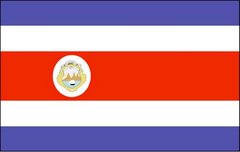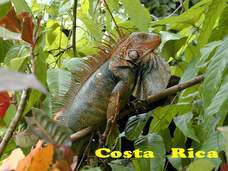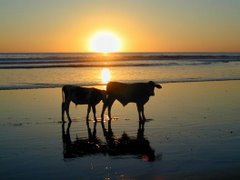Chan - Something different to drink
I've been on a little health kick since I've been watching Dr. Oz every morning.
www.doctoroz.com
Dr. Oz's site is fabulous with videos from his show, explaining how things in our body work, in everyday terms.
I first started watching Dr. Mehmet Oz on Oprah and now he has his own show. He didn't talk about Chan but when I was at the grocery looking for Flax seed, I found Chan seeds. It peaked my curiosity so I bought a pack and looked on the Internet to see what to do with it.
Here is one method I found for how it is prepared in Costa Rica.
Add 2 tablespoons of Chan to 5 cups of water and
bring to a rolling boil for one minute.
Remove from heat and let it set uncovered until it cools.
In blender, combine liquid, lemon/lime, and honey (to taste) and liquefy for seven seconds.
At this point, if you do not want the pulp, strain.
Chill in the refrigerator and serve cold.
It's better than you think to drink instead of sodas or sugary drinks.
If anyone knows of another way to prepare this, please DO tell!
The lemons came off my tree and work great! (lemons have loads of other uses)
I'm also growing ginger and interested in what to do with that, too!
Check out this link for foods that are good for you!
http://www.eatingwell.com/nutrition_health/healthy_aging/foods_for_beautiful_skin?utm_source=YahooBlog_Brierley_SkinFoods_061410
















12 comments:
Hi,
Had to look up Chan but it appears to be also called Chia, something I have been wanting to try. Got back on the sprout kick yesterday, after reading some posts on sprouts, tried some carrot tops tea, since my carrots are starting to go to seed, that is light and refreshing tea.
Anyway here is what I found on Chis, seems it makes a nice desert jello also.
THE RUNNING FOOD:
For centuries, Native Indian Peoples in the Americas have used chia seed as a staple food. Aztec warriors of Mexico subsisted on chia seeds during their battles and hunting expeditions. Indians of the Southwest would eat as little as a teaspoon of chia seeds during a 24-hour march. Indians ran from the Colorado River to the Pacific Ocean to trade turquoise for shells, carrying only a pouch of chia seed for nourishment. Sustained by chia seed, the Tarahumara Indians of Mexico hunted by running their prey to exhaustion.
"Desert Jello"
Time: 40-60 minutes
Materials: chia seeds
fresh fruit
mixing bowl and spoon
serving cups and spoons
extra fruit juice or natural prickly pear juice
Put fresh fruit (melons, apples, bananas, etc.) or drained fruit salad in a bowl and sprinkle chia seed all over it. Stir gently. Add some fruit juice of prickly pear juice. Let set in bowl a few minutes to thicken. You may want to
add more juice if it is very thick.
"Chia is a name given to a group of related plants (species of Salvia and Hyptis) that have been eaten for centuries in the Southwest U.S. and Mexico. Today, chia seeds are sold to make drinks having a jello-like consistency. Chia seeds are good sources of proteins and oils. They can help reduce the levels of
cholesterol in our blood. Chia seeds contain a gel which protects against drying in the desert. The gel helps slow down our digestion so that we can keep our blood sugar in balance. It can be helpful in preventing or controlling diabetes and other diseases."
I'm glad someone else did their research, too! Thanks for posting some useful info.
Google Chan and it will lead to Chia.
It's very interesting.
Hmmmmm....may have to try this.
I drank Chan and loved it while I was in Costa Rica in January of 2010. When I got back to the states I ordered chai seeds and soaked in water. NOT the same. I was told that all they did was soak the seeds in water. The drink had a semi sweet flavor and so good for you. The seeds I received after ordering thru amazon.com did NOT soak up the water and had a musty flavor. Not good. I'm wondering if I was supposed to boil the seeds? I believe that Chai is the name of the seed, chan is the name of the drink made from the seeds.
Hey, thanks for leaving a comment. Maybe the seeds are old. I buy chan seeds at the grocery market and soak them and drink it, it's fine. I also thought chan was the Spanish for chia.
iI spent two years in Costa Rica as a Peace Corps volunteer in the early 60's. My wife is Costa Rican and I was just trying to find our if chia and chan were the same thing. Glad to see they are. The Incas would probably take chan because of the way it absorbs water and could thus prevent dehydration.
Chia and chan are in the same family but they are different. Chia is high in Omega 3 and Chan is high in Omega 6. You difinitely want to increase your Omega 3, NOT your Omega 6.
The difference between chia and chan: http://www.botanical-online.com/english/Chia_plant.htm (look at the bottom at Varieties of chia.
The Latin American plant CHAN (“Hyptis suaveolens L.”) contains approximately 77-80% linoleic acid (omega-6), but offers little or no linolenic acid (omega-3).
This means chan is not a balanced source of essential fatty acids. Moreover, chan’s total oil yield is low compared to other commercial oil crops, including CHIA (Salvia hispanica L.).
In contrast to chan, chia seeds contain both omega-3 and omega-6 fatty acids in a very favorable ratio. In fact, chia provides up to 60% linolenic acid (omega-3) and a total oil content as high as 39%. Very impressive for a tiny seed.
Nutritionists for years have touted the benefits of omega-3s. However, a real benefit of chia is that it offers balanced omega-3 and omega-6 fatty acids, because both types of fats are required for our health. While Western diets lack omega-3s, overcompensating for this lack by overconsuming omega-3 relative to omega-6 creates its own health challenges. We need both types of fats.
There is consequently no comparison between chia and chan, at least not in terms of suitability as a balanced source of essential fats.
Chia wins this contest hands down. Balanced essential fats are just one more reason individuals interested in good health are consuming more chia seeds — especially organic chia seeds — and why chia is finally gaining much deserved recognition as a superstar among superfoods.
Chia and chan are in the same family but they are different. Chia is high in Omega 3 and Chan is high in Omega 6. You difinitely want to increase your Omega 3, NOT your Omega 6.
The difference between chia and chan: http://www.botanical-online.com/english/Chia_plant.htm (look at the bottom at Varieties of chia.
The Latin American plant CHAN (“Hyptis suaveolens L.”) contains approximately 77-80% linoleic acid (omega-6), but offers little or no linolenic acid (omega-3).
This means chan is not a balanced source of essential fatty acids. Moreover, chan’s total oil yield is low compared to other commercial oil crops, including CHIA (Salvia hispanica L.).
In contrast to chan, chia seeds contain both omega-3 and omega-6 fatty acids in a very favorable ratio. In fact, chia provides up to 60% linolenic acid (omega-3) and a total oil content as high as 39%. Very impressive for a tiny seed.
Nutritionists for years have touted the benefits of omega-3s. However, a real benefit of chia is that it offers balanced omega-3 and omega-6 fatty acids, because both types of fats are required for our health. While Western diets lack omega-3s, overcompensating for this lack by overconsuming omega-3 relative to omega-6 creates its own health challenges. We need both types of fats.
There is consequently no comparison between chia and chan, at least not in terms of suitability as a balanced source of essential fats.
Chia wins this contest hands down. Balanced essential fats are just one more reason individuals interested in good health are consuming more chia seeds — especially organic chia seeds — and why chia is finally gaining much deserved recognition as a superstar among superfoods.
Although the seeds look similar, chia and chan are not the same thing. They're not even in the same family.
Chia is Salvia Hispanica L. Soak it in liquid for 5 minutes, and it's ready to be part of a refreshing, healthy drink.
Chan is Hyptis suaveolens L. It requires boiling before it's soft enough to be eaten or put in a drink. Chan also has health benefits, although they're different from chia.
Yes, that is true, the scientific names are correct. However, Chan is used in a manner very similar to Chia. And also is very nutritious. The seeds are high in protein and are nutritious. I found an article in "J Food Sci", by Aguirre C and others. This says that it contins," seed protein content was 13.9% on dry weight basis. Analysis of its protein composition showed 39% globulins, 36% glutelins, 24% albumins, and 1% prolamins.... In general, except for lysine, it has a well-balanced amino acid composition, providing a good supply of almost all the essential amino acids for the different age groups. Magnesium content was high, whereas calcium, potassium, and phosphorous were in the average range when compared to barley, oat, rice, and wheat. The present results indicate that seeds from the chan plant could be relevant because of their nutritional properties and they have the potential to be widely used in the production of high-quality food." Sounds good to me, and good for vegetarians and vegans too. The website Ticoshopping sells the seeds.
Ok, So, I am from Bangladesh, a south Asian Country. The Chan seed is vastly used here for treating constipation or IBS or colon cleansing, for treating dehydration (as it cools body) etc. All we do, just soak one teaspoon of it in one glass water. Let it sit for some time, say 1 hour to overnight until it doubles in size. Then drink it either in empty stomach at early morning or before bad. It works really good. Sometimes it's mixed with lemon or Psyllium seed/husk.
I love CHIA SEEDS!! Soaked.
Macha
Post a Comment